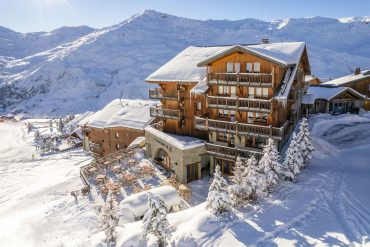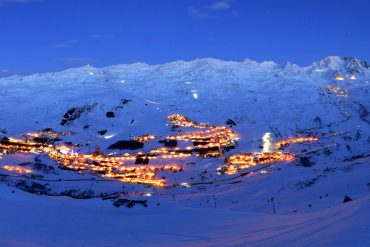Carbon neutrality: ski resorts make a commitment
In the mountains, ski resorts are aiming for carbon neutrality. What are their commitments to achieve this?
Climate change, environmental protection, the ecological footprint and zero waste are all crucial issues of our time. In response to the climate emergency, some countries have committed to achieving carbon neutrality by 2050.
But what is climate neutrality? It is the principle of a balance between greenhouse gas emissions generated by human activity and their absorption by natural or artificial reservoirs.
Why do we talk about carbon neutrality? Because the best-known greenhouse gas, which also has the greatest impact on global warming, is carbon dioxide (CO2). It accounts for 76% of greenhouse gas emissions according to the IPCC.
In France, many institutions and companies are taking steps to achieve the goal of sustainable change. This is the case, for example, of the French ski areas, which are directly affected by global warming. They want to reverse the curve of greenhouse gas emissions.
On 1 and 2 October 2020, the Domaines Skiables de France (DSF) congress took place in Grenoble. On this occasion, 250 DSF member operators committed themselves to 16 concrete actions for the protection of the environment, grouped into 5 major themes.
The goal is to make France’s ski areas carbon neutral by 2037. But that’s not all, they are also aiming for a reconciliation between ski enthusiasts and the natural environment in the mountains.
Carbon neutral ski areas by 2037
The first of the 5 main themes is the carbon neutrality of ski areas by 2037. That is, not to emit a single gram of CO2 by 2037. To achieve this, 5 points have been established:
- Firstly, the project to develop hydrogen-powered snow groomers. The maintenance of slopes during the winter season weighs heavily on the carbon footprint of ski areas. Snow groomers alone account for 58% of the carbon footprint of ski areas, according to a 2010 study, which represents 1.2% of the ski areas’ carbon footprint.
According to the president of the DSF, prototypes of hydrogen-powered snow groomers should be unveiled in the next three to five years, which would mean that most diesel groomers will have been phased out by 2030.
- The second point is the deployment of carbon balance evaluations in all ski areas. These will have the function of carrying out accurate carbon assessments within three years.
- Next, all groomer drivers will be trained in eco-driving within five years. This will make it possible to reduce diesel consumption and carbon emissions by 5 to 10%, without waiting for the development of hydrogen-powered groomers.
- As a fourth point, the operators of ski lifts (chairlifts, gondolas, cable cars…) will also be trained in eco-driving within two years. This will reduce the electricity consumption of ski areas by 10 to 20%.
- Finally, the last point concerns sensible use of ski lifts. In this sense, the ski areas will close certain ski lifts in case of insufficient activity, as long as this does not affect the number of runs open in winter.
In addition to these actions, the Compagnie des Alpes (CDA) has entered into a 10-year partnership with the Office National des Forêts (ONF) to plant or replant more than 250 hectares of forest. The aim is to neutralise and offset 45,000 tonnes of CO2 over the next 30 years.
From 2021, Compagnie des Alpes has financed 50 hectares of reforestation in the national forests of Savoie, Haute-Savoie and Hautes-Alpes, to be as close as possible to its ski areas. But also 50 hectares in the Oise region, close to the Parc Astérix near Paris.
The carbon footprint of ski resorts
However, all these commitments to carbon neutrality concern ski areas. According to several studies, they represent only 2% of the carbon footprint of ski resorts.
Indeed, when we talk about the carbon footprint of ski resorts, we include not only the ski areas, but also travel, heating, insulation and consumption on site.
It is important to know that two major items concentrate the majority of gas emissions in the resort: passenger transport represents 57% and energy use in buildings 27%. The 57% of transport includes 54% from cars and 35% from planes, 25% of which are used to transport foreign tourists, according to a 2010 study.
On this point, the Compagnie des Alpes is committed to developing electric shuttles to transport visitors to the resorts.
Some ski resorts have also been taking measures for several years. In this respect, some resorts offer discounts on the price of the ski pass upon presentation of a BlaBlaCar or BlaBlaBus (rideshare and bus companies) trip confirmation, if the customers come in a 100% electric vehicle, or depending on the number of occupants in the car.








